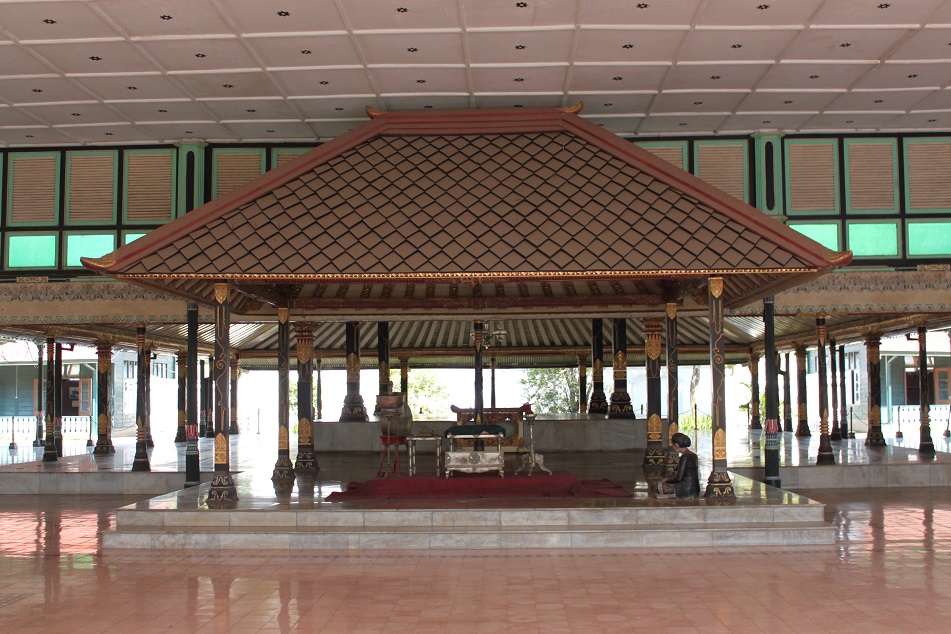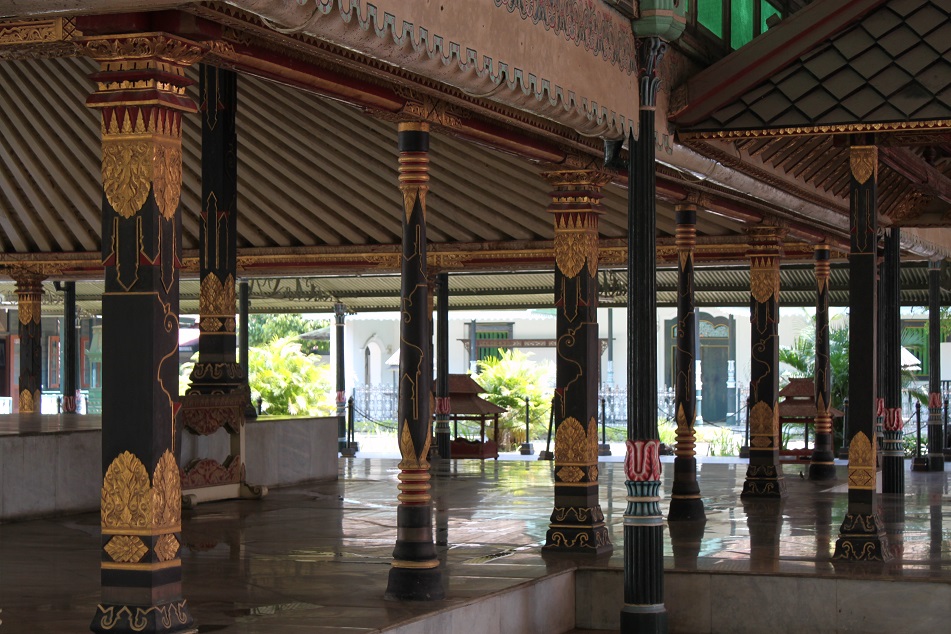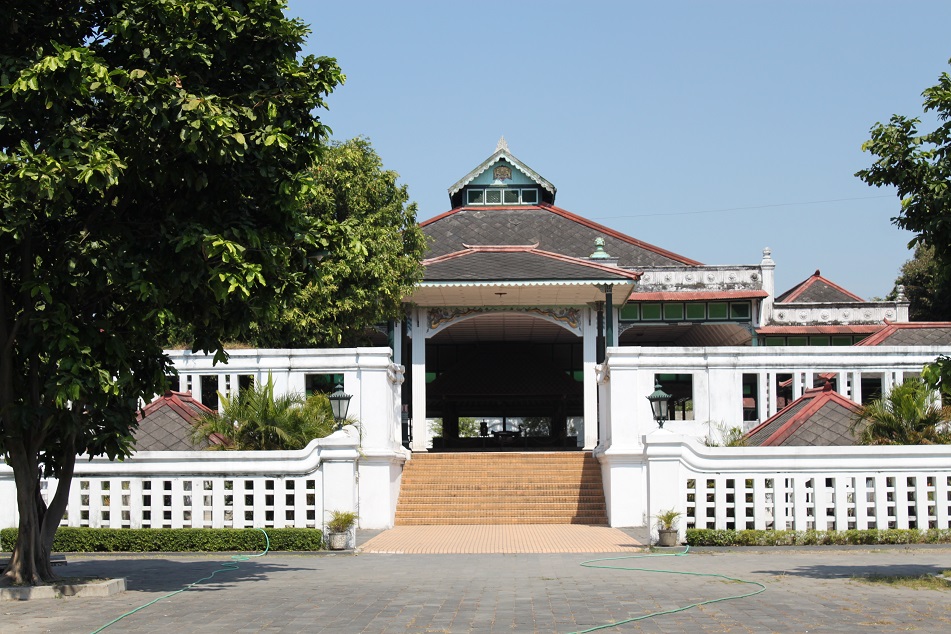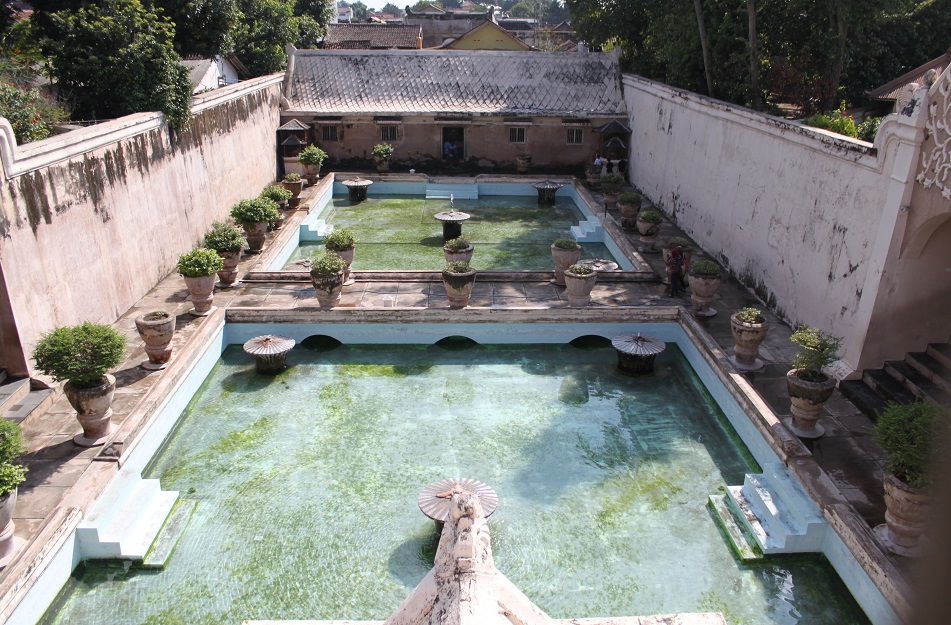On August 15, 1945, people across Japan, at that time an empire encompassing large swathes of Asia, heard something they considered unthinkable. The once formidable power officially surrendered to the Allies in an announcement made by Emperor Hirohito himself. Very early the next day in Southeast Asia, Sukarno and Mohammad Hatta (Indonesian independence leaders for years), were secretly relocated from Jakarta to the town of Rengasdengklok by elements of the local independence movement who wanted them both to declare Indonesia’s independence as soon as possible. After endless meetings and a lengthy negotiation, the draft of the proclamation was finalized in the wee hours of the morning of August 17, 1945. Then at 10am that day, Sukarno and Hatta declared the nation’s independence in Jakarta, symbolizing the end of centuries of foreign rule in the Indonesian archipelago.
However, the Dutch who colonized the Southeast Asian island chain before the Japanese came and took control of the 17,000 or so islands, were keen on reclaiming their former possession by all means necessary. Skirmishes broke out across the new country – particularly on the islands of Java and Sumatra – between the Republican forces, the remaining Japanese soldiers, and the British military who, as part of the Allies, helped facilitate the return of the Dutch forces to Indonesia. There were efforts by both the Indonesian and the Dutch sides to end this period of instability known as the Indonesian National Revolution. Two agreements were signed in 1946 and 1948, but both collapsed miserably as each side insisted on implementing their own interpretation of the accords.
The Netherlands Indies Civil Administration (NICA), set up by the Dutch as their post-war colonial administration in Indonesia, managed to overrun the capital, Jakarta. Hamengkubuwono IX, the sultan of Yogyakarta at that time, offered the Republicans the chance to temporarily relocate to his city, located in the heart of Java more than 400 km away. The Indonesian leaders quietly left the capital by night train and managed to arrive in Yogyakarta undetected by the Dutch. The Sultan provided Gedung Agung – the former office of the Dutch resident situated not far from the royal palace – for Sukarno and Hatta to run the national government and lead the ongoing struggle against NICA. Yogyakarta remained the capital of the nascent republic for three years – although the seat of the Indonesian central government was briefly moved to the West Sumatran town of Bukittinggi in 1948 following the capture of Sukarno and Hatta by the Dutch – until 1949 when the Dutch-Indonesian Round Table Conference held in The Hague marked the official transfer of sovereignty of the Netherlands East Indies, with the exception of Western New Guinea, to Indonesia.
On August 17, 1950, five years after the de facto declaration of Indonesia’s independence, Jakarta was finally restored as the capital of the republic. The central government now began focusing on domestic matters, including the relegation of local rulers’ power all across the country to make way for the implementation of a modern governmental structure. All but one ruler lost their political powers. Instead of becoming a part of Central Java province, Yogyakarta was granted a special status with Hamengkubuwono IX as its governor. The move was a token of gratitude by the central government for the Sultan’s pivotal role in sheltering its leaders in Yogyakarta during the struggle against the Dutch.
As the influence of neighboring Surakarta waned, Yogyakarta took the lead in promoting Javanese culture in Indonesia and abroad. Strategically located in the Kewu Plain, where a wealth of eighth- and ninth-century Hindu-Buddhist ancient temples dot the fertile landscape, and close to the world’s largest Buddhist shrine of Borobudur, Jogja (Yogyakarta’s nickname) has been capitalizing on its reputation as the cultural heart of Java reasonably well – although Solo (how most people call Surakarta) might passionately disagree with the notion of Jogja as culturally superior. Jogja has also been a center of learning as it hosts a multitude of universities, including one of the nation’s best, which gives the city a lively art and cultural scene. A Canadian vlogger who has been living in Indonesia for more than 10 years even describes Jogja as a place where you can have the most amazing philosophical conversations with random people at a convenience store.
Jogja has indeed been known as a place that is open for everyone and every belief. Despite being officially an Islamic kingdom, the Islam practiced by the royal family and many who live outside the palace walls is one that incorporates Javanese philosophy and traditions where Mount Merapi – Indonesia’s most active volcano – and the Indian Ocean – the abode of the mythical Queen of the South Sea – form an integral part of those beliefs. Located in the middle of a straight line connecting the volcano and the south sea is the keraton, the official residence of the sultan since the 18th century following the schism of the Mataram Sultanate. Consisting of large and small pavilions clustered in seven groups of buildings, the palace complex is an epitome of the finesse of Javanese architecture. Despite being rather modest compared to the palaces in Europe, some structures within the keraton bear some of the most ornate wooden rafters I have ever seen. Intricate wood carvings with a lavish finishing in gold paint are a treat for the eyes of palace visitors, as they have been in centuries past.
Other religions also flourish in Jogja as seen in the plethora of Catholic and Protestant universities in the city, churches from various denominations, and also an important remnant from the past: the magnificent Prambanan, a rare temple compound where shrines for the Hindu Trimurti (Shiva, Vishnu and Brahma) form the focal point of the temple’s concentric layout. On my last visit for a company outing, our tour guide explained to us the connections among the most prominent figures of the world’s main religions and the common values they preached, a very Javanese way to see things, I must say. In the city, workshops where batik cloths are made have long been a major attraction for tourists, alongside the silver shops where one can find anything from earrings to a miniature model of Borobudur for those with deep pockets. No less iconic to the city is its drag shows where performers dress in traditional Javanese women’s costumes at restaurants adorned in a Javanese architectural style. I have never seen the show, but I’ve heard positive reviews about it.
Jogja’s openness is such that it has also become a breeding ground for conservative and hardline ideologies. This is the paradox of Jogja: on one hand it is home to people who might have been less welcome in other regions of Indonesia, but on the other hand it tolerates intolerant groups. For much of its history, Jogja has managed to keep the precarious balance of accommodating everyone while maintaining social harmony. However, in recent years things appear to have tilted to the right; the forced closure of an Islamic boarding schools for transgenders – the first of its kind in the world – eight years after it was established was only one of many disturbing occurrences which are, unfortunately, becoming more common these days. As recent as last week, a lone terrorist with two swords attacked a priest and a few people during a Sunday morning mass at a local Catholic church. Yet, in the days that followed Muslim neighbors who live in the church’s vicinity helped clean the place of worship of blood and the debris of a shattered Jesus statue so it would be ready for mass the following Sunday. As a Javanese myself I know that deep in their hearts most people in Jogja value peace and harmony more than anything else.
To say that Jogja is at the most important crossroads in its history is not an understatement. Apart from the ongoing struggle by those who want to keep it open for all kinds of people and those who wish to have a society dictated by stricter religious values, a potential crisis is looming on the horizon for the sultanate. Hamengkubuwono X, the current sultan, appointed his eldest daughter as his heir apparent for he has no son, and nor has he married more than one woman – who could have given him a son – as was the norm practiced by past sultans. Since its inception in 1755 Yogyakarta has never had a sultana as its ruler, and this understandably has stirred up controversy and discontentment within the royal family and outside the palace walls. Some cite religious reasons, although in history several Islamic monarchies – from a kingdom in what is now Algeria to Aceh in modern-day Indonesia – once had female sultans. But others – the traditionalists – might pose a uniquely Yogyakartan question regarding this predicament: how can a woman lead Yogyakarta while one of the mandatory rituals for a new sultan involves a mystical marriage with the Queen of the South Sea?
A sultana who can stand upon solid justifications to lead a supposedly Islamic realm, and navigate her way to uphold centuries-old rituals, and become a benevolent ruler for those who love and hate her – subjects who embrace diversity and denounce it outright – will certainly bear a mountain of burdens on her shoulders. Ready or not, Jogja is on the cusp of a fascinating new era.



















Another interesting post on the post-war independence movement of your beautiful country. It is amazing how the European nations tried to re-establish their colonial dominance in your part of the world and miserably failed. Thank you, Bama!
LikeLike
The 1940s and 1950s were a period of time when independence movement was at its peak in Asia; North Vietnam won its independence in 1945, the Philippines in 1946, India in 1947, and Malaysia in 1957, to name some. With that strong pan-continental sentiment to break free from colonial powers, it must have been very hard for the Europeans and the Americans to keep their tight grip on their colonies. Thanks for reading, Peter!
LikeLiked by 1 person
It’s really nice how Yogyakarta Sultanate had been acknowledged for its role in Indonesia’s independence. It seems kind of rare to see monarchists and republicans working alongside one another. The politics of the sultanate also sound really fascinating–is the sultan more of a figurehead or does he have legislative power?
LikeLike
The sultan of Yogyakarta is currently the only governor in Indonesia who is not directly elected by the people. And as the governor of the special region, he holds the same executive power as the governors of other provinces in Indonesia. It’s interesting that you pointed out the monarchists-republicans cooperation, which makes me curious if there are other places in the world where this is practiced.
LikeLike
That is yet another shining parcel of enlightenment, Bama. Those images have been exquisitely framed and exposed —it is so easy to get bland images of such shot-to-death-structures. I especially loved the work on the pillars, the underground mosque and the circular prayer hall. Thinking about the last one though, I wonder how prayers were offered as Muslims are supposed to be facing Mecca alone while praying.
LikeLike
Much appreciated, Umashankar. Good observation about the mosque! It’s no longer used now, but I can imagine in the past those who prayed there formed imaginary lines facing Mecca, like striped donuts, if you will.
LikeLiked by 1 person
Intetesting. Really beautiful pictures. It sounds like a magic piace.
LikeLike
The palace, the former water castle, and the ancient temples (dating back to the eighth and ninth centuries AD) make Yogyakarta a really fascinating place to explore. Thanks for dropping by!
LikeLiked by 1 person
I’ll take the chance to visit
LikeLiked by 1 person
I was not fully aware of Indonesia’s immediate post-war history until I visited there in 2016. Thank goodness the colonial government was not reestablished and that Indonesia maintained her independence. I adored Yogyakarta and am delighting in another visit here through your lens. Your pictures are absolutely magnificent. I am saddened that Indonesia has taken a turn for the right since my visit, but then my own country has saddened me in taking a similar turn. Though as you say ‘I know that deep in their hearts most people in Jogja value peace and harmony more than anything else’. I think that is true for most of the people of this world. I can only hope that through all our ebbing and flowing, mankind will finally embrace a center path, one filled with peace and love. May Princess Mangkubumi find acceptance in the end.
LikeLike
I have a penchant for visiting ancient temples which are in abundance in and around Yogyakarta, therefore despite having been to this part of Indonesia so many times, I think I’ll never get bored of it. It’s very disheartening to see all those incidents in the special region in recent years, although it seems like for some reason the world is witnessing a resurgence of far-right groups. But then it means that we can’t be complacent; spreading the message of peace, compassion and tolerance, as well as bringing people from different backgrounds together are some of the things we can do to keep those extremists at bay. Thanks for reading and sharing your thoughts, Lisa!
LikeLiked by 1 person
It will be interesting to see if the sultana can rule. Also, it is always interesting to read about the post-war history in this part of the world. In the US, we focus mostly on Europe and Japan when learning about WWII, but the whole world was fighting for independence and being put back together after 1945.
LikeLike
Only time can tell whether or not she will actually assume power in Yogyakarta — some people prefer the sultan’s brother to replace him instead of his daughter. As for the world history, I realized that since I started blogging I’ve learned so much more about the history of nations around the world because most of us grew up reading about events in the past that in some ways felt more familiar with our own identity, discounting those which we thought — or made to believe — were irrelevant.
LikeLike
Thanks for another fascinating lesson in history, culture, and architecture. Intriguing story about the possibility of a sultana in Jogja – not something we are likely to read about in the news, so perhaps you can keep us informed when the time comes.
The hardships and suffering caused by hardliners forcing their views on everyone else seems to be a problem that keeps repeating itself worldwide. Why can’t they just live their own way and leave the rest of the population alone to make their own choices?
And that “intricate doorway”…WOW!
LikeLike
The pleasure is mine, Marilyn. As I mentioned to Jeff in a previous comment, apparently there are people who have been pushing the sultan to consider his own brother to replace him when the time has come. As far as I know, his decision to appoint his own daughter as his heir apparent hasn’t changed. But we’ll see about that in the upcoming years.
There will always be hardliners in every community. The challenge is how to keep those who choose to have extreme views at bay.
LikeLike
I visited those places years ago. Unfortunately, Taman Sari, Istana Air, and several sites were renovated at that time, so I was not enjoyed it. But, Museum Kereta was really amazing.
LikeLike
That’s a reason for you to come back one day! 🙂 I’ve seen photos of Taman Sari before it was renovated, and actually it looked really atmospheric with so much character. But then if the renovation work was carried out to preserve the compound, then I really shouldn’t complain.
LikeLiked by 1 person
Indeed… I saw the picture of Taman Sari before its renovation just know. Which mean that what I saw when I visited was the finishing stage of renovation.
Then, I should visit those again someday.
LikeLiked by 1 person
wath nice home ………….
LikeLike
No ordinary home that is. 🙂 Thanks for dropping by!
LikeLike
I would consider being a sultan’s wife or concubine in my next life if I could have access to those pools!
LikeLike
Ha! Well, it’s open for everyone now, so at least you wouldn’t need to share your love for the sultan with other women!
LikeLiked by 1 person
Pingback: Javanese Royal Palaces: Mangkunegaran | What an Amazing World!
Bama, it’s great that you are throwing the spotlight on a period of Indonesian history that much of the outside world is frankly unaware of! To experience Taman Sari firsthand after reading about it in one of your earlier posts was a real treat. I remember how we went around in circles trying to find the hidden entrance to the underground mosque – it makes me wonder how the pleasure garden would have looked in its heyday, without the sprawl of houses and streets that now occupy its grounds. I do hope that the princess can take the throne and prove her detractors wrong! This world needs more women in leadership roles all across the board. It is sadly ironic to see how Saudi Arabia is pursuing a more moderate form of Islam while Indonesia is becoming increasingly conservative.
LikeLike
This is a chapter of Indonesian history not only most foreigners are unaware of, but also often forgotten by Indonesians themselves, hence the urge for me to write about it. I remember on my first visit to Taman Sari, my ex-coworkers and I had to ask some locals before we eventually found the place. Sorry for repeating the same mistake with you, Bart and Badai! 😀 Last week I read that some factions within the Yogyakarta royal family are pushing for the nomination of the sultan’s brother as his successor, despite the fact that the sultan himself has appointed his oldest daughter to replace him one day. The sultanate has never been in a more precarious situation.
LikeLiked by 1 person
Your photos are spectacular, along with your insight. I would love to return to Yogya someday and see more of the city — including those amazing pools!
LikeLike
Thanks Kelly! One of my memories of your first posts that I stumbled upon was the one on Prambanan. Despite developing very rapidly and having to deal with other problems, a visit to Jogja is always a good idea. Hope you’ll return to Southeast Asia soon! And when you do, make sure to say hello to Jogja!
LikeLiked by 1 person
Sayangnya, waktu itu kita berhenti sampai area Bangsal Pagelaran aja ya Bam.
Setahun kemudian, aku balik lagi ke sana dan masuk ke bagian inti istana, yang pintu masuknya berbeda dari yang kita masuki kemarin. Sekilas tata ruangnya mirip dengan Keraton Kasunanan Surakarta, hanya saja ya lebih ramai dan lebih baik penataannya. James harus diajak ke sana deh. Dan harus dicek juga hari terbaiknya kapan, karena pas aku ke sana ada pagelaran wayang dan tari. O iya, di dalamnya juga sekarang ada museum Sri Sultan Hamengkubuwono IX, koleksinya cukup menarik. Dan jangan lupakan juga museum keretanya. Dan untuk melengkapi, harus mampir juga ke Kotagede. Banyak ya PR nya hahahaha
LikeLike
Iya dulu kenapa ya kita gak eksplor semua? Apa karena waktu itu bagian tertentu keraton udah mau tutup ya?
Next time ke Jogja mesti balik lagi ke keraton, terus ke Kotagede, terus ke candi-candi yang aku belum pernah datangi… Banyak maunya. 😀
LikeLiked by 1 person
Seingatku sih, karena waktu itu sudah masuk ‘siesta time’ Bam hahahahaha. Wajib bukan?
Iya, itu harus! Jangan lupa jalan-jalan juga di sekitaran Prawirotaman. Dan beberapa situs kerajaan yang terpencar, semacam Panggung Krapyak, Situs Warung Boto dll.
LikeLike
Ahhh yes, siesta time! 😀 Noted untuk tempat-tempat itu, jadi nanti pas ke Jogja lagi gak boleh terlewat.
LikeLiked by 1 person
Pingback: Post-Pandemic Travel Dream: Appreciating the Little Things | What an Amazing World!